Sydney Contracting Engineers
Induction Process
List of Induction Documents
In order to comply with Sydney Contracting Engineers’ SCE induction process, we kindly request the inclusion of the following essential information.
By partnering with SCE Corp and engaging in various activities such as pricing jobs, attending sites, and undertaking construction works, you affirm your commitment to adhering to all relevant requirements outlined on our induction page, and ensuring all team members possess the necessary knowledge and qualifications for the job. This includes promptly providing necessary documentation to SCE Corp and ensuring timely renewal of required documents. For companies, it is your responsibility to ensure that all employees comply with these requirements and any additional state or territory regulations. This collaborative effort ensures a seamless and compliant working relationship with SCE Corp.
Representative Information:

Representative Information - SCE Induction Process:
This section pertains to the details of the person representing a company or trade conducting the works. It includes their full name, contact mobile number, and email address( SCE Induction Process). These induction documents details are crucial for communication and identification purposes.
Induction documents includes:
- Full legal name
- Contact mobile number
- Email address
Business Information:

Business Information - SCE Induction Process:
Here, the focus is on the business aspect. The Australian Business Number (ABN) and/or Australian Company Number (ACN) may be required for legal and taxation purposes (Induction Documents). These numbers help identify the business entity uniquely.
Induction documents includes:
- Business name
- Australian business number (ABN)
- Australian company number (ACN) (if applicable)
- Business address
- Primary contact number
- Trade license number
Emergency Contact:

Emergency Contact - SCE Induction Process:
In case of emergencies, it’s essential to have contact information for a designated next of kin. This includes their full name, mobile number, and address. Emergency contacts are crucial for quick communication during unforeseen events (Induction Documents).
Induction documents includes:
- Next of kin full legal name
- Next of kin mobile number
- Next of kin address or email address
Identification Documents:
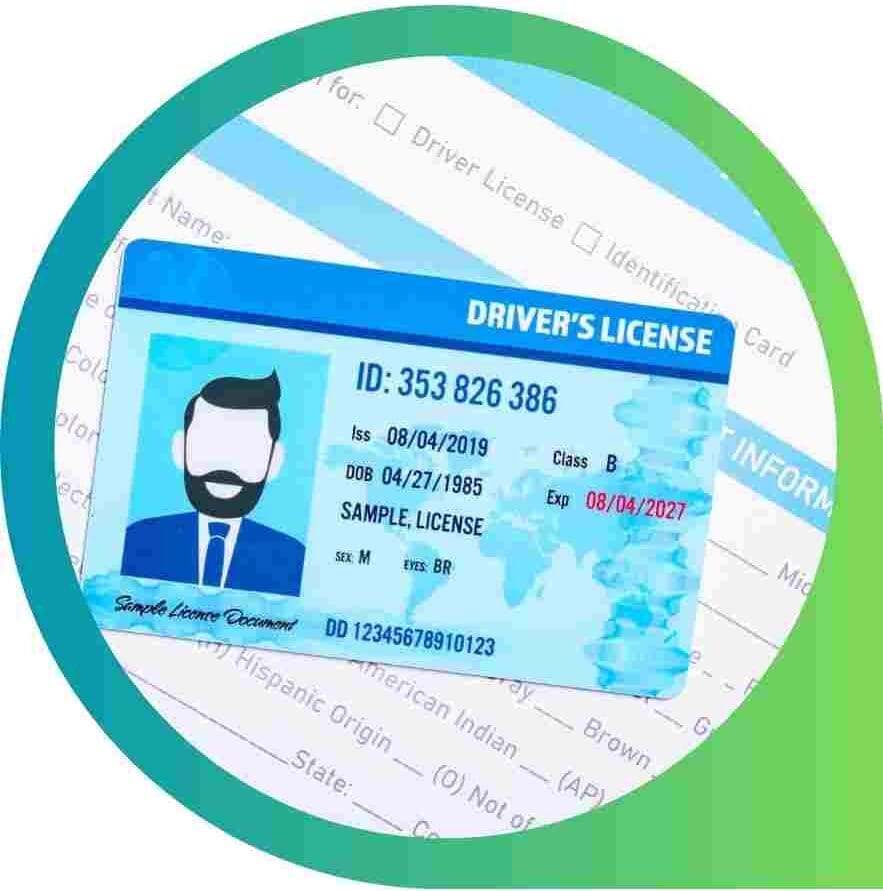
Identification Documents - SCE Induction Process:
This section deals with verifying the identity of the individual. It requests a valid driving license, with photos of both the front and back. Additionally, a clear photo of the individual is required, adhering to specific guidelines regarding format and clarity (Induction Documents).
- Copy of your valid driving license photos (front and back)
- Photo of individual (JPG format, non-blurry, no hats/sunglasses, in front of a plain wall)
Australian Working Rights:

Australian Working Rights - SCE Induction Process
Ensuring that individuals have the right to work in Australia is crucial. For Australian citizens, documents such as a passport, citizenship certificate, or birth certificate may be required (Induction Documents). For non-Australian citizens, verification through the Visa Entitlement Verification Online (VEVO) website is necessary.
Induction documents includes:
- For Australian citizens: Passport, citizenship certificate, or birth certificate
- For Non-Australian citizens: Provide VEVO (Visa Entitlement Verification Online) issued by Australian Immigration Website
Certifications and Licenses:

Certifications and Licenses:
Various certifications and licenses are often required depending on the nature of the work. This induction documents includes:
- White card: Indicates completion of general construction induction training.
- Working at heights certification: Necessary for tasks involving working above 2 meters in height.
- Personal and/or company licenses: Required licenses for operating within specific industries or professions.
- Asbestos awareness certificate: Indicates awareness of asbestos-related risks and safety procedures.
- Confined space licence (where required): Required for individuals working in confined spaces, demonstrating competency in identifying and mitigating risks associated with confined space entry.
- Police check: Ensures that individuals have undergone a background check within the last 12 months, confirming their suitability for the role.
Insurances Documents:

Insurance Documents - SCE Induction Process:
Ensure your business is adequately protected with the right insurance documentation tailored to your specific needs( SCE Induction Process):
Insurance Documentation for Companies:
- Public liability: Essential for covering claims of third-party property damage or bodily injury.
- Workers compensation: Provides coverage for employees in case of work-related injuries or illnesses.
- Professional indemnity (where applicable): Protects against claims of professional negligence or errors.
Insurance documentation for sole trades:
- Public liability: Crucial for covering liability claims arising from your business activities.
- Personal injury insurance: Provides coverage for injuries sustained by the sole trader.
- Income protection insurance: Assists in compensating for income lost as a result of injury or illness.
- Professional indemnity (where applicable): Offers protection against claims of professional negligence.
Insurance documentation for non-resident sole trades:
- Overseas health cover: Ensures access to medical treatment while working abroad.
- Workers compensation: Provides coverage for work-related injuries or illnesses.
- Professional indemnity (where applicable): Offers protection against claims of professional negligence.
Having the right insurance documentation in place can safeguard your business and personal assets against unforeseen risks and liabilities (Induction Documents).
Induction documents includes:
Company Representative Details:
- Representative’s full name, contact mobile number and email address.
- ABN and/or ACN, where applicable.
- Next of kin details for emergency (full name, mobile number and address).
- A valid driving licence photos (back and front).
- Photo of the individual – Photos need to be in jpg format – Any other format will not be processed. Photos cannot be blurry; no hats/sunnies; must be in front of a plain wall. A photocopy of the photo will not be accepted.
- Confirmation of Australian working rights – Australian citizen (passport, citizen or birth certificate); Non-Australian citizen (Visa verification from the VEVO website).
- A copy of your white card as well as all employees working on site.
- A valid copy of your working at heights (if you ever need to work above 2m height).
- A valid personal and/or company licenses (picture or copy of contractor license).
- Asbestos awareness
- Police check (within the last 12 months).
Insurances for companies:
- Public liability
- Workers compensation
- Professional Indemnity (Where applicable)
Induction documents includes:
Employees Details:
- Representative’s full name, contact mobile number and email address.
- ABN and/or ACN, where applicable.
- Next of kin details for emergency (full name, mobile number and address).
- A valid driving licence photos (back and front).
- Photo of the individual – Photos need to be in jpg format – Any other format will not be processed. Photos cannot be blurry; no hats/sunnies; must be in front of a plain wall. A photocopy of the photo will not be accepted.
- Confirmation of Australian working rights – Australian Citizen (passport, citizen or birth certificate); Non-Australian Citizen (Visa Verification from the VEVO website).
- A copy of your white card as well as all employees working on site.
- A valid copy of your working at heights (if you ever need to work above 2m height).
- A valid personal Contractor licenses (picture or copy of contractor license).
- Asbestos awareness
- Police check (within the last 12 months).
Insurances for Sole Trader
- Public liability
- Personal Injury insurance
- Income Protection insurance
- Professional Indemnity (Where applicable)
Induction documents includes:
Employee Details:
- Representative’s full name, contact mobile number and email address.
- ABN and/or ACN, where applicable.
- Next of kin details for emergency (full name, mobile number and address).
- A valid driving licence photos (back and front).
- Photo of the individual – Photos need to be in jpg format – Any other format will not be processed. Photos cannot be blurry; no hats/sunnies; must be in front of a plain wall. A photocopy of the photo will not be accepted.
- Confirmation of Australian working rights – Australian Citizen (passport, citizen or birth certificate); Non-Australian Citizen (Visa Verification from the VEVO website).
- A copy of your white card as well as all employees working on site.
- A valid copy of your working at heights (if you ever need to work above 2m height).
- A valid personal and Contractor Licences. (Picture or copy of licence).
- Asbestos awareness
- Police check (within the last 12 months).
Insurances for Special Case:
- Overseas health cover
- Workers compensation
- Professional Indemnity (Where applicable)
Induction documents includes:
Employee/Company Representative Details:
- Representative’s full name, contact mobile number and email address.
- ABN and/or ACN, where applicable.
- Next of kin details for emergency (full name, mobile number and address).
- A valid driving licence photos (back and front).
- Photo of the individual – Photos need to be in jpg format – Any other format will not be processed. Photos cannot be blurry; no hats/sunnies; must be in front of a plain wall. A photocopy of the photo will not be accepted.
- Confirmation of Australian working rights – Australian Citizen (passport, citizen or birth certificate); Non-Australian Citizen (Visa Verification from the VEVO website).
- A copy of your white card as well as all employees working on site.
- A valid copy of your working at heights (if you ever need to work above 2m height).
- A valid personal and/or company Degree/Charted Licence / Other specific Licences. (Picture or copy of Certifications).
- Asbestos awareness
- Police check (within the last 12 months).
Insurances for Special Case:
- Public Liability insurance (certificate of currency).
- Workers compensation
- Professional Indemnity insurance (certificate of currency), if relevant.
Working with SCE Procedure / Requirements
Please reply to the work order email with the following information:
1.JSA (Job Safety Analysis).
A JSA, or Job Safety Analysis, is a systematic process used to identify potential hazards associated with a specific job or task. It involves breaking down the job into individual steps and assessing the risks associated with each step. By conducting a JSA, organisations can proactively identify hazards and implement controls to mitigate risks, ensuring the safety of workers and minimising the likelihood of accidents or injuries.
2.SWMS (Safe Work Method Statement) – if applicable
An SWMS, or Safe Work Method Statement, is a document that outlines the high-risk construction work activities, the hazards associated with these activities, and the control measures to be implemented to ensure the work is carried out safely. It is a legal requirement in many jurisdictions for certain high-risk construction activities. An SWMS helps ensure that workers understand the risks involved in their tasks and know how to work safely to prevent accidents and injuries.
3.SWMS Checklist:
- Job Address
- PO Number
- Trade Site Supervisor Name & Signature
- Director Name & Signature (the person holding the company license)
The SWMS checklist is a set of items to be included in the Safe Work Method Statement to ensure it is comprehensive and covers all necessary aspects of the work. It typically includes details such as the job address, purchase order (PO) number, the name and signature of the trade site supervisor, the name and signature of the director (the person holding the company license), and any before photos required for documentation or reference. This checklist helps ensure that all relevant information is documented and that necessary signatures and documentation are obtained before commencing work.
4.Before Photos (Must include location and time stamp)
Notes: (No works are to be undertaken unless written approval has been issued by the SCE’s project coordinator. Any instructions beyond the defined scope of work must be communicated to SCE’s office team for evaluation.)
Completion Photos (location and time stamped): Completion photos are visual documentation taken upon finishing a project or specific task. These photos serve as evidence of the completed work and are often used for record-keeping, quality assurance, and client communication purposes. Completion photos capture the final state of the project, showcasing the outcome of the work performed.
Relevant Completion Certificate: A relevant completion certificate is an official document issued upon the successful completion of specialised works or tasks. It serves as evidence that the work has been completed correctly and meets the required standards or specifications. Specialised works may include activities such as waterproofing, plumbing, design works, electrical installations, asbestos handling, and others. The completion certificate attests that the work has been conducted in compliance with applicable regulations and industry standards, providing assurance of quality and safety.
1. Valid Tax Invoice Requirements:
In order to meet the relevant legislative criteria for a valid ‘Tax Invoice’, we require Tax Invoices to be completed correctly in accordance with the followings:
- Your ABN: Your Australian Business Number (ABN) is essential for tax identification purposes.
- Date of Issue: The date when the tax invoice is issued helps track transactions and ensure timely payments.
- Your Full Address: Your complete address is necessary for correspondence and record-keeping purposes.
- The words “Tax Invoice”: Your complete address is necessary for correspondence and record-keeping purposes.
- Your Trade License Number: Your trade license number, if applicable, helps validate your eligibility to perform the specified services.
- Do not invoice the Supervisor.
- Your Primary Contact Number.
- A suitable and unique invoice number.
- Separate invoice for each site address.
- Faxed Tax invoices will not be accepted.
- Invoice to SCE.
- Works must be completed before you submit invoices for payment.
- GST Statement “total price includes GST”, or “not registered for GST”.
- Total price (including GST), GST shown separately. Do not round the GST.
- Your Full Trading Name (Pty Ltd if required) or if trading name please indicate.
- All tax invoices must be clear; if we cannot read them we are unable to pay them.
- Our Company Details: Our ABN 77 611 423 799 and Address: Office 1/97 Blaxland Rd, Ryde NSW 2112.
- Quantity of goods supplied. Copy of receipts for materials supplied for Do & Charge job is required.
- Description of work carried out and/or supplied or your quotes number. Attach a copy of your approved quote. (NOTE: description of any additional work required if not listed in your quote or PO).
- Please clearly identify the dates work carried out and the cost break down on the invoice. Please specify labour and material cost separately.
- Our Purchase Order Number (note: jobs carried out without a purchase order or invoices received different from the amount on purchase order will not be paid, NO VERBAL AUTHORITY BY ANYONE WILL BE ACCEPTED, only make safe jobs can be carried out without purchase order).
- Full Job Site Address including Unit number and/or House number (this falls under description of works carried out or supplied).
- Payments are by EFT and released in accordance with the below mentioned criteria.
- Due to changes with the NSW Payroll Tax Legislation, we will not be able to release payment to subcontractors until we have received a signed Subcontractors Statement.
- It is your responsibility to get your tax invoice into our office on time, no longer than 7 days after completing the work, otherwise we cannot guarantee the payment. No responsibility is taken for late or lost tax invoices. If you are bringing your invoice into our office, they must be handed directly to accounts payable, not given to the Supervisor.
- Bi-Monthly Sub-Contractors ONLY: valid invoices that are received between the 1st-15th will be processed on the last day of the month (or the next working day after the end of the month). Invoices that are in our office between the 16th – 31st will be processed on the 15th of the following month.
- Monthly Sub-Contractors ONLY: valid invoices that are received by the close of business on the last day of the current month, will be processed at the end of the following month.
2. Subcontractor Statement (Upload): All tax invoices must be accompanied by a signed subcontractor statement form, which includes:
The contract number reflecting either the PO number or invoice number.
The period shown in the subcontractor statement should include the duration of works and the date of the invoice (Form is available at the end of the page).
3. Purchase Dockets (Upload): Provide/upload purchase dockets as required for verification of expenses and reconciliation with the invoice.
Notes:
- Invoice will only be processed when all the safety and quality documentation are submitted on time.
- Invoices must be issued to SCE Corp within 2 days of work completion.
Required Safety Documentation
Although you have successfully demonstrated to be professional in your field of expertise, upon request, SCE is willing to provide you and all your workforce with the appropriate tools, trainings, information and documentation required to assist you with your Risk Evaluation and Control Assessment to ensure that you have the necessary steps to carry out works safely.
Job Safety Analysis (JSA) is a systematic process used to identify, assess, and mitigate workplace hazards associated with specific tasks or job activities. It involves breaking down a job into individual steps, identifying potential hazards at each step, and determining appropriate controls to eliminate or reduce those hazards.
The process typically involves the following steps:
Selecting the Job or Task: Choose a specific job or task to analyse. This could be a routine task or one that is considered high-risk.
Breaking Down the Job: Break the job down into its individual steps or components. This helps in understanding the sequence of actions required to complete the task.
Identifying Hazards: For each step of the job, identify potential hazards that could cause harm to workers, equipment, or the environment. Hazards may include physical hazards (such as moving machinery), chemical hazards (such as exposure to hazardous substances), ergonomic hazards (such as repetitive motions), or biological hazards (such as exposure to pathogens).
Assessing Risks: Evaluate the likelihood and severity of each identified hazard. This helps prioritise which hazards pose the greatest risk and require immediate attention.
Implementing Controls: Develop and implement controls to eliminate or minimise the risks associated with each hazard. Controls may include engineering controls (such as machine guards), administrative controls (such as training and procedures), or personal protective equipment (such as gloves or goggles).
Review and Update: Periodically review and update the JSA to account for changes in the job, equipment, or work environment. This ensures that the analysis remains effective in identifying and addressing hazards.
By conducting a Job Safety Analysis, organisations can proactively identify and address workplace hazards, reduce the risk of accidents and injuries, and create a safer working environment for employees.
Note: By signing this document, you affirm that you have fulfilled and submitted all requisite induction documentation to SCE. Furthermore, you certify that you hold the relevant insurances, licenses, and qualifications required to carry out the specified task.
NOTE: For any activities listed below, which are considered as a HIGH RISK ACTIVITY, you must provide relevant SWMS in conjunction with the JSA. Please note, your SWMS must check all the boxes (as per SWMS checklist). And you must have a copy of the SWMS and approved checklist on site at all times.
- Risk of a person falling more than 2 metres
- Work on or near pressurised gas mains, piping or in close proximity of other services
- Work on or near chemical, fuel or refrigerant lines
- Work in areas with artificial extremes with temperature
- Temporary load bearing support for structural alterations or repairs
- Work on or near energised electrical installations or services
- Works that may cause disturbance to asbestos
- Work on, in or adjacent to a road, railway, shipping lane or other traffic corridor in use by traffic other than pedestrians
- Work in or near water or other liquid that involves risk of drowning
- Demolition of a load bearing structure
- Work in or near a confined space
- Work in an area that may have a contaminated or flammable atmosphere
- Work in an area with movement of powered mobile plant
- Work in or near a shaft or trench deeper than 1.5 m or a tunnel
- Diving work
- Work on a telecommunication tower
- Using explosives
- Tilt up or precast concrete elements
- Using a hazardous substance
SWMS Checklist: The checklist is provided at the end of this webpage. Please download and complete it before issuing the SWMS.
- If any risk is identified as HIGH in your JSA, you Must NOT proceed with the job. You MUST first complete your SWMS, and if unsure, discuss the risks and the proposed risk mitigations with SCE management to ensure your risk mitigation is effective.
- If any risk is identified as Medium in your JSA, you should note your risk mitigation in the JSA, discuss and implement the control measure/s with your team before commencing works.
- If any risk is Low, you should decide an optional control measure based on your technical point of view.
Additional Requirements
General Document Requirements along with the induction documents for all trades:
- SCE – Job Safety Analysis (JSA)
- SCE – Job Inspection Form
- SCE – Working with SCE Requirements
- SCE – General Building SWMS (Where applicable)
- SCE – SWMS Checklist (Where applicable)
- SCE – Company Induction Form
- SCE – Site Induction Handout
For private jobs:
- SCE – Completion Certificate for Private Jobs
For insurance jobs:
- SCE – Authority to Proceed, Remove, and Dispose
- SCE – Completion Certificate for Insurance
For invoicing:
- Subcontractor’s Statement (This document needs to be signed and sent along with the invoice)
Please note: All these forms are available at the end of the page.
Schools Maintenance Works Safety Requirements
At SCE, safety is our top priority, especially when working in environments such as schools where the well-being of students, staff, and visitors is paramount. In line with our commitment to safety excellence, we have compiled a comprehensive list of safety equipment for all trades to implement on their worksites. These measures are designed to ensure the highest level of safety standards are upheld throughout the duration of the project, safeguarding both our workers and the occupants of the school premises.
Mandatory Safety Requirements:
The following comprises a list of items that all trades should bring to ensure utmost safety during the works. These measures are essential not only for the safety of the tradespeople but also to protect the personnel within the school premises.
High-visibility vests are worn by workers to increase their visibility to others on the worksite, reducing the risk of collisions and improving overall safety, especially in busy or poorly lit areas.
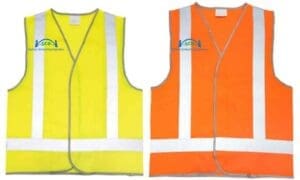
Product link: (https://www.bunnings.com.au/craftright-large-hi-vis-orange-day-night-vest_p0401336)
Steel cap boots are commonly used by workers in industries such as construction, manufacturing, warehousing, and logistics where there is a risk of heavy objects falling or rolling onto the feet. They help prevent injuries such as crushed toes or foot fractures that could occur due to accidental impacts.
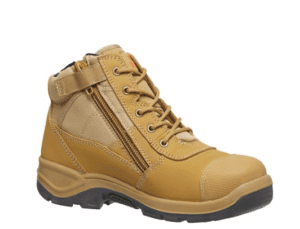
Product link: (https://www.bunnings.com.au/search/products?page=1&q=safety+boots&sort=BoostOrder)
Optional Safety Requirements:
Additionally, there are optional equipment items available that trades may choose to bring, depending on the specific type of works. These optional tools and resources aim to provide safety and prevent damage to other items on the worksite.
Bollards are sturdy posts installed to delineate pedestrian pathways, protect building entrances, or create barriers, helping to prevent vehicle intrusions and enhance safety in designated areas.
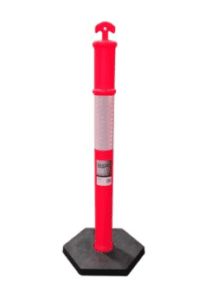
Product link: (https://www.bunnings.com.au/brutus-1150mm-safety-bollard-with-6kg-base_p0415189)
Safety cone poles are brightly colored, lightweight poles affixed to traffic cones to increase their visibility and effectiveness in delineating hazards, guiding traffic, or marking boundaries, thereby improving safety on the worksite.
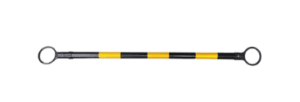
Product link: (https://www.bunnings.com.au/syneco-1-3-2-1m-extendable-safety-cone-pole_p0378262)
Witches hats, also known as traffic cones, are portable markers used to alert workers and passersby to potential hazards, redirect traffic, or delineate safe zones, contributing to overall safety and organization on the worksite.

Product Link: (https://www.bunnings.com.au/syneco-700mm-pvc-safety-cone-with-reflective-tape_p0373463)
Warning tape is a highly visible adhesive tape used to mark off hazardous areas, indicate restricted access zones, or highlight safety hazards, effectively communicating potential dangers to workers and visitors.
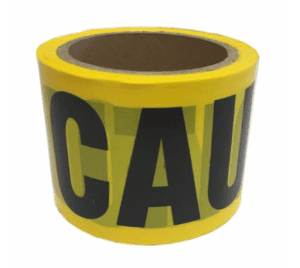
Product Link: (https://www.bunnings.com.au/brutus-75mm-x-50m-yellow-black-printed-caution-tape_p1091367)
Warning signs are prominently displayed visual cues that convey important safety messages, such as cautionary instructions, hazard warnings, or emergency procedures, helping to prevent accidents and promote awareness on the worksite.
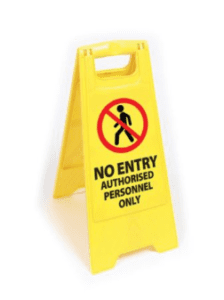
Product link: (https://www.bunnings.com.au/brutus-no-entry-a-frame-signage_p0400835)
Slippery surface signs are placed in areas prone to wet or slippery conditions, alerting individuals to exercise caution and take appropriate measures to avoid slips, trips, and falls, thus reducing the risk of accidents and injuries.
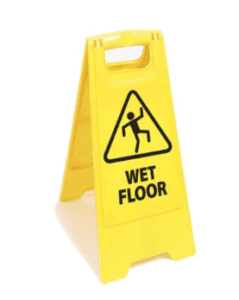
Product link: (https://www.bunnings.com.au/brutus-signage-caution-wet-floor-sign_p0400836)
Carpet protectors are temporary coverings placed over carpets or flooring to shield them from damage during construction or renovation works, preserving their integrity and ensuring a safe working environment.
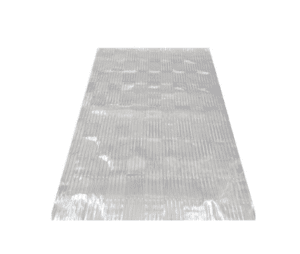
Product link: (https://www.bunnings.com.au/ideal-diy-floors-1m-clear-supa-carpet-protector-pvc-matting_p6610211)
Drop sheets are protective coverings laid over furniture, equipment, or flooring to prevent damage from dust, debris, or paint splatter during construction or maintenance activities, helping to maintain cleanliness and safety on the worksite.

Product link: (https://www.bunnings.com.au/paint-partner-2-6-x-3-6m-clear-plastic-drop-sheet_p1661260)
Drop sheets combined with masking tape offer enhanced protection by securely covering surfaces and creating defined boundaries, minimizing the risk of damage and ensuring efficient containment of debris or spills during construction tasks.

Product link: (https://www.bunnings.com.au/uni-pro-550mm-x-25m-plastic-drop-down-sheet-with-masking-tape_p1668203)
Tarps are versatile protective coverings used to shield surfaces, materials, or equipment from adverse weather conditions, dust, or debris during construction, renovation, or transportation activities.
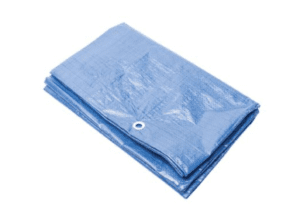
Product link: (https://www.bunnings.com.au/saxon-2-0-x-2-5m-light-duty-tarpaulin_p0492136)
Masks are essential personal protective equipment designed to filter out harmful airborne particles, dust, fumes, or contaminants that may pose respiratory hazards to workers.
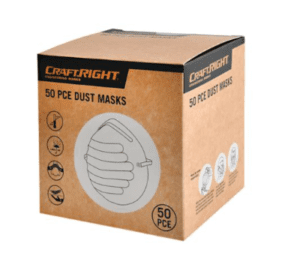
Product link: (https://www.bunnings.com.au/craftright-dust-masks-50-pack_p0375361)
Respirators offer advanced respiratory protection by filtering out airborne contaminants, toxic gases, or particulate matter that may pose serious health risks to workers.

Product link: (https://www.bunnings.com.au/3m-p2-particulate-respirator-9123-25-pack_p0353854)
Shade cloth is a durable fabric material used to create shaded areas or enclosures in outdoor workspaces, providing protection from direct sunlight, UV radiation, and excessive heat exposure.

Product link: (https://www.bunnings.com.au/coolaroo-1-83m-graphite-90-uv-heavy-duty-people-cover-shade-cloth-per-metre-graphite_p3300429)
Blue Tack is a versatile adhesive putty used to secure lightweight objects or materials in place, reducing the risk of accidental displacement or tripping hazards on surfaces such as walls or floors.
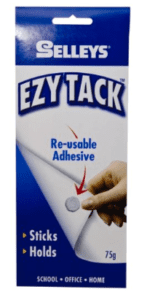
Product Link: (https://www.bunnings.com.au/selleys-75g-ezy-tack_p1210324)
The scissor fence serves as a temporary barrier to cordon off hazardous areas or restrict access to certain zones during construction or maintenance works, enhancing safety by preventing unauthorised entry.
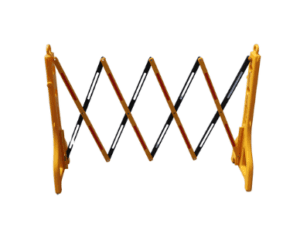
Product link: (https://www.bunnings.com.au/syneco-2-5m-expandable-safety-barrier_p0367584)
Safety glasses provide essential eye protection against debris, dust, and other airborne particles commonly encountered in construction environments, minimizing the risk of eye injuries.
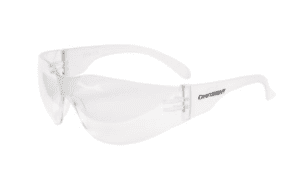
Product link: (https://www.bunnings.com.au/craftright-clear-safety-glasses_p0401338)
High-visibility gloves feature bright colors and reflective strips, increasing the visibility of workers’ hands in low-light conditions or high-traffic areas, thereby enhancing safety by reducing the likelihood of accidents.
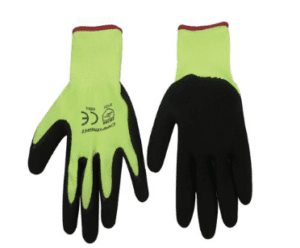
Product link: (https://www.bunnings.com.au/craftright-hi-vis-work-gloves-large_p0256790)
Hard hats are essential head protection gear designed to safeguard workers from falling objects, impact injuries, and electrical hazards, ensuring their safety on construction sites.

Product link: (https://www.bunnings.com.au/craftright-safety-helmet_p0380430)
Sydney Contracting Engineers Forms
SCE – Authority to Proceed, Remove and Dispose
SCE – Site Induction Form
SCE – Completion Certificate – Insurance
SCE – Completion Certificate – Private Jobs
SCE – General Building SWMS
SCE – Job Safety Analysis – JSA
SCE – Job Inspection Form
SCE – Site Induction Handout
SCE – Working with SCE Requirements
SCE – SWMS Checklist
Subcontractors Statement
FAQ
The essential requirements for companies participating in SCE’s induction process include providing representative information, business information (ABN and ACN), emergency contact details, identification documents, Australian working rights confirmation, certifications and licenses, insurance documents, and specific induction documentation.
A JSA is a systematic process used to identify potential hazards associated with a specific job or task in construction work. It’s important because it helps organisations proactively identify hazards, assess risks, and implement controls to mitigate risks, ensuring the safety of workers and minimising accidents or injuries.
An SWMS is a document that outlines high-risk construction work activities, associated hazards, and control measures to ensure work is carried out safely. It is required for certain high-risk construction activities and helps workers understand risks and work safely to prevent accidents.
The SWMS Checklist ensures that the Safe Work Method Statement is comprehensive and covers all necessary aspects of the work. It includes details such as job address, PO number, supervisor and director signatures, and before photos, ensuring all relevant information is documented before commencing work.
Subcontractors working with SCE are required to submit safety documentation such as JSA, SWMS, risk matrix, and additional safety documents specified by SCE to ensure compliance with safety standards.
Hi-vis vests increase worker visibility, reducing the risk of collisions, while steel cap boots protect against foot injuries from falling objects. Both are essential for ensuring worker safety on construction sites.
Optional safety requirements for worksites include bollards, safety cone poles, warning tape, signs, and protective gear like masks and gloves. Trades might choose to bring them based on specific work conditions or to enhance safety measures.
The Subcontractor Statement ensures that tax invoices meet legislative criteria for validity and includes essential information such as contract numbers and periods, facilitating smooth processing and payment of invoices.
Prompt submission of invoices and safety documentation ensures timely payment and compliance with safety standards, contributing to efficient project management and maintaining a safe working environment.
Subcontractors can ensure compliance with SCE’s requirements for tax invoices by including all necessary information such as ABN, date of issue, full address, trade license number, and following specific instructions provided by SCE for invoice submission and processing.
Thank you for your visit, and welcome to the construction home

